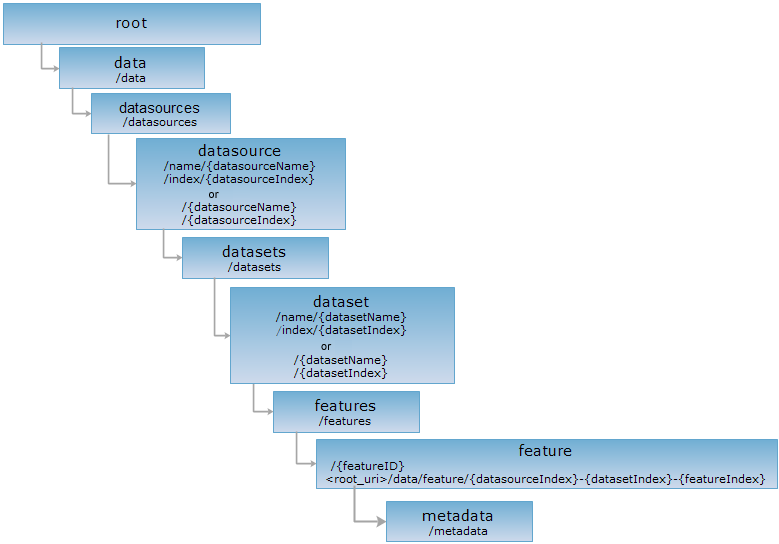
<feature_uri>/metadata
The metadata resource is used to represent the metadata for geographical features. it includes the author, date created, last editor, last edit time, etc of the geographic data.
Supported Methods:
Supported output formats: rjson, json, html, xml.

Implement the HTTP request on the following URI, where supermapiserver is the server name, with rjson being the output format.
http://supermapiserver:8090/iserver/services/data-jingjin/rest/data/feature/0-8-2/metadata.xml
The metadata resource is used to represent the metadata for geographical features. It includes the creator, date created, last editor, last edit time, etc of the geographic data.
Execute a GET request on the metadata resource. The representation structure for the returned resource is like this:
| Field | Type | Description |
| createTime | long | Create time. |
| createUser | String[] | The creator (if the current service is authorized to be accessed anonymously, the creator cannot be seen.) |
| lastEditTime | long | The last edit time. |
| lastEditUser | String[] | The last editor (if the current service is authorized to be accessed anonymously, the last editor cannot be seen.) |
Execute a GET request on the metatdata resource:
http://supermapiserver:8090/iserver/services/data-jingjin/rest/data/feature/0-8-2/metadata.rjson
The result returned is as follows:
{
"createTime": 1436945830474,
"createUser": "admin",
"lastEditTime": 1436945830474,
"lastEditUser": "admin"
}
Asks for the response identical to the one that would correspond to a GET request, but without the response body. This is useful for retrieving meta-information written in response headers, without having to transport the entire content. The meta-information includes the media-type, content-encoding, transfer-encoding, content-length, etc.
HEAD request can be used to check if the metadata resource exists, or if the metadata resource can be accessed by clients. It can also determine if the metadata resource supports an output format <format> if performed on a URI with .<format> included.